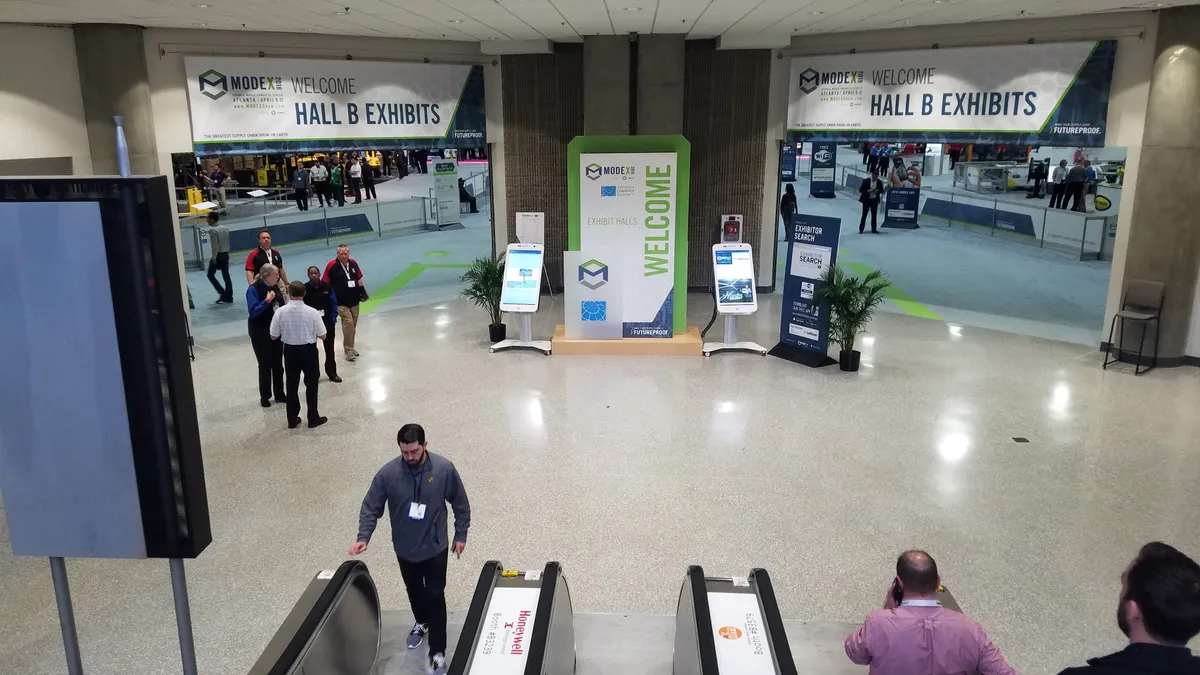Dive Brief:
- Next-generation technology including robotics, the internet of things (IoT), predictive analytics, artificial intelligence and driverless vehicles are already disrupting supply chain operations, according to The 2018 MHI Annual Industry Report.
- Whereas only 35% of respondents considered robotics disruptive in 2015, this year 71% said they were considering adopting the technology within five years. The results, gleaned from a survey of 1,116 industry professionals, show companies are increasingly willing to adopt new tech if the business case is clear.
- However, learning to make a financial case for visibility or digital initiatives remains a widespread challenge. The report names the business-case problem a leading barrier to adoption, alongside workforce shortages and building trust and security within "always-on" systems.
Dive Insight:
What should you be doing today, to get ahead of the technology curve? George Prest, CEO of MHI, gave attendees at a MODEX 2018 panel a formula: Get started; think big; start small; and act fast.
The four steps reflect both the challenges and opportunities 11 next-generation technologies present for supply chains. Early adopters have seen productivity rise two to three times previous rates, according to case studies in the report. One user saw wholesale fulfillment rates skyrocket 650 units per operator hour with the use of robotics and automation solutions.
Yet, a look at adoption rates shows it takes time — as well as incremental and diversified investments — to reach the next generation's potential. While respondents expect the industry to reach more than 90% adoption of cloud technology within five years, just over 50% had deployed the technology within their supply chains in 2018.
As a result, it's pivotal executives begin learning how to implement the technology as soon as possible. And when they do, it's all the more important to think big — both in terms of technology's operations potential, and also in terms of how it can help the business in general.
With this high-level perspective to innovation, supply chain managers can build out investment pitches with small-scale initiatives that can be achieved quickly.
"Successful innovators learn another language — the language of the CFO, who is typically the key decision maker in evaluating and approving business cases," the report says. "To make investment decisions like a CFO, understand an innovation's benefits and them map them to shareholder value. Identify value levers for each of the three shareholder value categories — revenue growth, operating margin and asset efficiency — and then quantify the benefits relative to each of the value levers."
"We should not think about automation first," said Randy Bradley, assistant professor of information systems and supply chain management at the University of Tennessee, during a MODEX 2018 panel discussing the report. "We should think of process engineering and process design."














